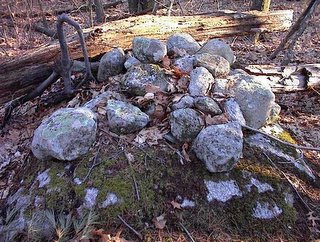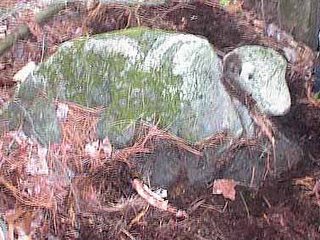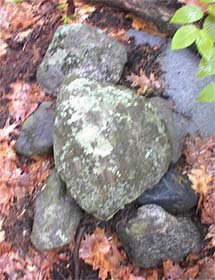 The quartz is there, but not too easy to see: it is directly below the highest rock in the picture. This pile is from the highland between Acton and Carlisle.
The quartz is there, but not too easy to see: it is directly below the highest rock in the picture. This pile is from the highland between Acton and Carlisle.The quartz is a stripe on the back of this next one:
 This one is from near a pond in Acton.
This one is from near a pond in Acton.And, finally, I cannot resist showing this one - with no quartz and not in the pattern of the others but still, pretty clearly a turtle:
 This one is from the same general area of Acton/Carlisle as the others. I just read recently that the seven parts of the turtle are: head, plus 4 legs, plus tail, plus back. Always wondered why the number 7 was so important to early people. This might be part of one explanation.
This one is from the same general area of Acton/Carlisle as the others. I just read recently that the seven parts of the turtle are: head, plus 4 legs, plus tail, plus back. Always wondered why the number 7 was so important to early people. This might be part of one explanation.So why all this fuss about turtles? Well they clearly are important but these stylistic differences may be interesting as they are correlated to where the piles occur. That gives a clue as to the different times and peoples who might have made them.
And, while I am mentioning numbers, you know there are 13 plates on the back of a turtle? Yes, it is the same as the number of full moons in the year. Seven days a week and thirteen moons a year, how could the turtle not be considered important?
1 comment :
I should add that the head rock on these piles should look beaked.
Post a Comment